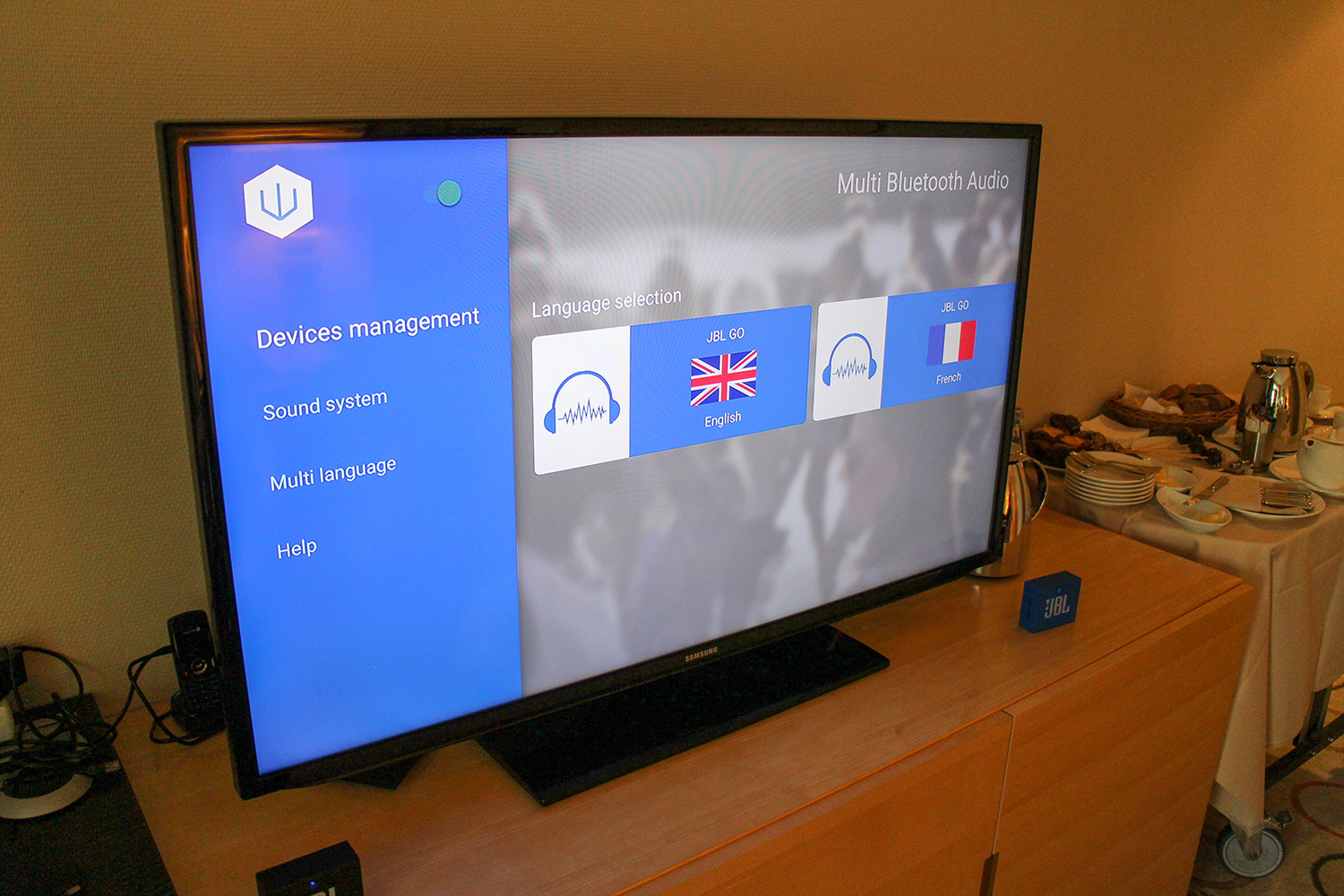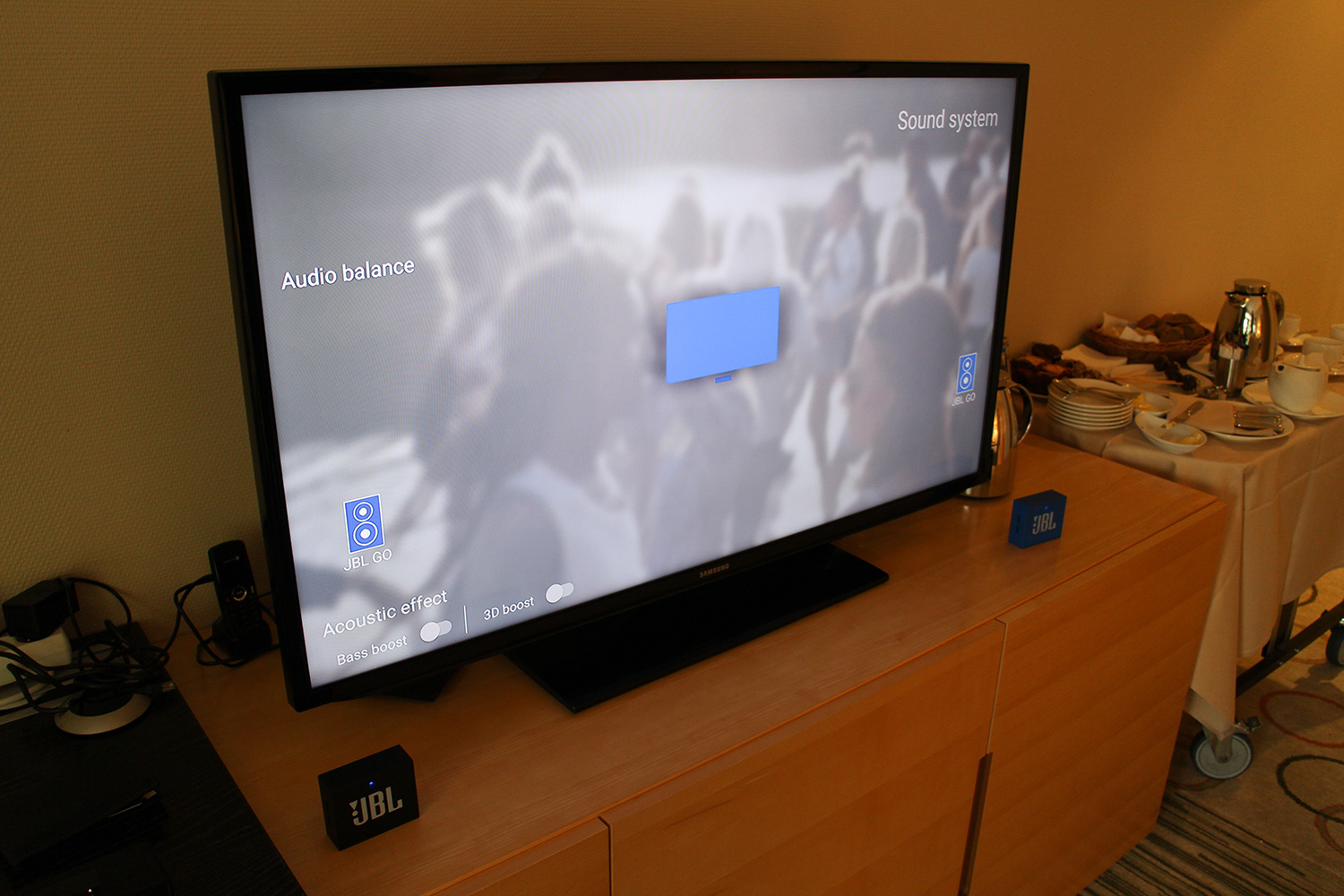

We first met French startup Tempow last year when it unveiled exciting new software capable of syncing together multiple Bluetooth devices. It allows you to chain together old Bluetooth speakers and turn them into a perfectly synced multi-room audio system like Sonos, or listen in to the same music track with a couple of friends simultaneously on separate Bluetooth headphones.
It was a key feature of the Moto X4, and it generated a fair bit of buzz, but Tempow has not been resting on its laurels. We sat down with CEO, Vincent Nallatamby, and Vice President of Engineering, Julien Goupy, at IFA 2018 to learn about the new line of Tempow Audio Profile applications, called “TAP Smart.”
“We want to make a multi-room audio system that’s really accessible,” Nallatamby said. “Bluetooth is the best wireless solution for this in terms of cost and power, and our mission as a company is optimizing the Bluetooth software and developing extra features to benefit users.”
“We want to make a multi-room audio system that’s really accessible.”
The clever software Tempow has developed combines Wi-Fi and Bluetooth, enabling you to stream audio from a single source to multiple Bluetooth speakers and control your music with voice commands through Amazon Alexa or Google Assistant.
There are many different ways this software could benefit people, but Tempow showed us a few examples. With Tempow’s software onboard a smart speaker, you can tell Alexa to play a tune and have it come from the smart speaker as usual, but also any connected Bluetooth speakers. The audio is synced, just as it is with a Sonos system or another multi-room audio setup, and you can connect to up to six devices at once.
You can also use the software to create a surround sound system for your smart TV, using a couple of Bluetooth speakers at either side of the room for true stereo sound and perhaps a bigger Bluetooth speaker as a subwoofer.
Because it works with any Bluetooth device, you and your partner can use it to listen to the TV with Bluetooth headphones late at night when you don’t want to disturb anyone, or have your kids wear headphones so you don’t have to listen to Spongebob.
Another clever idea shown off in the demo was to play different languages to different headsets or speakers. Imagine your parents only speak English, but you want to watch the film in its native French – Tempow’s software can keep everyone happy by streaming both soundtracks to separate devices simultaneously. Interestingly, this same idea can be used to tailor sound profiles for different people, which could prove valuable for the hearing impaired.
Perhaps the most intriguing idea here is the potential to turn the Bluetooth speakers dotted around your home into a kind of mesh network that would enable Alexa or Google Assistant to work from anywhere. Bluetooth speakers tend to have microphones built-in already and Tempow is working on relaying voice commands to a central smart speaker.
“The assistant should be invisible, but everywhere, behind any device.”
“It doesn’t make sense to have Alexa represented by a single device if you think about it,” Nallatamby said. “The assistant should be invisible, but everywhere, behind any device, so you can talk and have it answer wherever you are, and the cheapest way to do that right now is with Bluetooth speakers.”
In terms of hardware cost and power usage, Bluetooth is cheaper than Wi-Fi and Tempow is proving that it’s ripe for a shot of innovation.
Before you get too excited, it’s important to note that Tempow is working on securing more partners to get its clever software licensed and out there. At the moment, there’s just one device that can take advantage of the new functionality and it’s a bizarre household robot that reminds of us DJ Roomba from Parks and Rec – the makeshift robot vacuum with the iPod dock on its back — though, it’s actually a bit more sophisticated than that.

Keecker is a voice-enabled multimedia robot that runs on Android TV with access to the Google Play Store and Google Assistant, and also functions as an Amazon Alexa smart speaker. This peculiar, mobile, robot, shaped like a large egg, can project video onto the walls or ceiling and respond to voice commands. It’s the perfect demo device for Tempow because it combines smart speaker, smart TV, and Bluetooth functionality.
While Keecker offers the right combination of tech to show off the potential of TAP Smart, Tempow has much grander ambitions, looking to license its software to a big-name manufacturer like Samsung that could push it out into a wide range of products. Amazon or Google could also be a good fit, as by embedding the software into a single smart speaker they could extend the presence of their voice assistants throughout the home to existing Bluetooth devices, without having to sell more dots or speakers.
While Keecker offers the right combination of tech to show off the potential of TAP Smart, Tempow has much grander ambitions.
A part of the beauty of Tempow’s approach is the fact that it’s completely hardware agnostic. It will work with your current range of Bluetooth speakers, smart speakers, and any smart TV with Bluetooth support. Because TAP Smart works by modifying the core Bluetooth protocols with a software-only solution, it will continue to work seamlessly across every generation of Bluetooth speakers, regardless of the chipset.
It’s refreshing to meet smart people focused on squeezing more value out of old tech like Bluetooth and hardware that many of us have lying around in our homes – who doesn’t have a Bluetooth speaker or two? While sophisticated multi-room audio or surround sound systems may be prohibitively expensive for many, Tempow’s software smarts could enable you to create your own at a fraction of the price.
The trick is getting it out there, but based on what we’ve seen so far and how well it works, it’s only a matter of time before a major player licenses the software.





